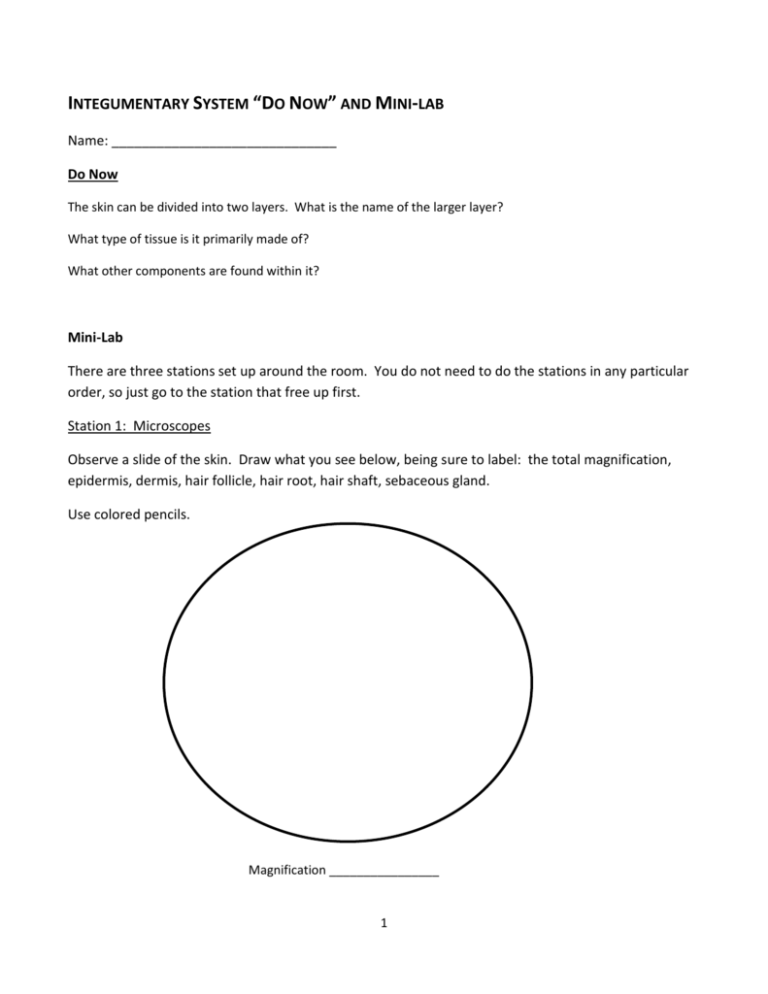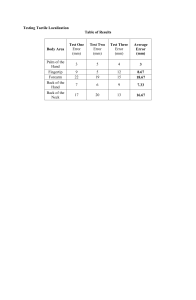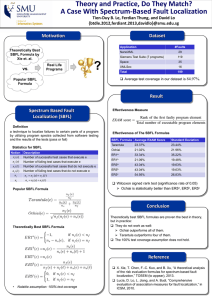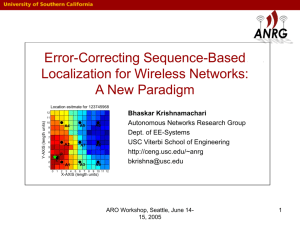click
advertisement

INTEGUMENTARY SYSTEM “DO NOW” AND MINI-LAB Name: ______________________________ Do Now The skin can be divided into two layers. What is the name of the larger layer? What type of tissue is it primarily made of? What other components are found within it? Mini-Lab There are three stations set up around the room. You do not need to do the stations in any particular order, so just go to the station that free up first. Station 1: Microscopes Observe a slide of the skin. Draw what you see below, being sure to label: the total magnification, epidermis, dermis, hair follicle, hair root, hair shaft, sebaceous gland. Use colored pencils. Magnification ________________ 1 Station 2: Two-Point Threshold Work with a partner to test your ability to differentiate two distinct sensations when the skin is touched simultaneously at two points. Start by touching the skin with a pair of calipers in which the arms are completely together. Gradually increase the distance between the arms, testing the subject’s ability to feel two distinct points of contact. Record the shortest distance at which you can feel two points. Repeat for each body area. Two-Point Threshold Body area tested Two-point threshold (mm) Which areas have the finest ability to discriminate distinct sensations? Face Back of hand Palm of hand Fingertips Lips Back of neck Ventral forearm Station 3: Tactile Localization Tactile localization is the ability to determine which portion of the skin has been touched. The tactile receptor field of the body periphery has a corresponding ‘touch’ field in the brain. Some body areas are well represented with tough receptors, and tactile stimuli can be localized with great accuracy, but the density of touch receptors in other body areas allows only crude discrimination. Work with a partner to determine each other’s tactile localization. Close your eyes while your partner touches one area of your body with a marker. Keeping your eyes closed, try to touch the same area of your body with a different colored marker. Then, use a ruler to measure the distance between these two points. Take this measurement three times for each body location. Record the data below. Tactile Localization Body area tested 1st error of localization (mm) 2nd error of localization (mm) 3rd error of localization (mm) Back of hand Palm of hand Fingertips Back of neck Ventral forearm Does the ability to localize the stimulus improve with practice? Explain. Which area has the smallest error of localization? Explain. 2 Average error of localization (mm)











